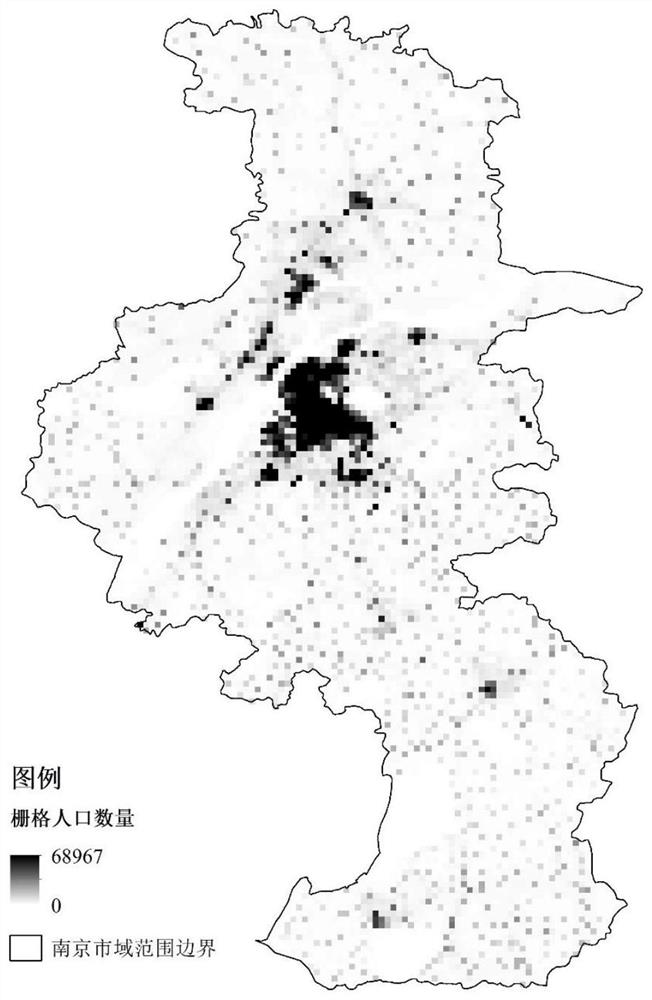Urban main and auxiliary center boundary identification method based on population raster data
A raster data, boundary recognition technology, applied in data processing applications, special data processing applications, instruments, etc., can solve the problems of high data acquisition difficulty and complex operation
- Summary
- Abstract
- Description
- Claims
- Application Information
AI Technical Summary
Problems solved by technology
Method used
Image
Examples
Embodiment Construction
[0033] like figure 1 As shown, a method for identifying the boundaries of major and sub-centers of a city based on population raster data includes the following steps:
[0034] (1) Extract the population raster data of the cities studied from the free and open global population raster datasets such as LandScan and WorldPop;
[0035] (2) import the urban population raster data obtained in step (1) into ArcGIS software for preprocessing, and generate vector data of urban population distribution for further analysis;
[0036] (3) Carry out local spatial autocorrelation analysis on the urban population distribution vector data generated in step (2), obtain the spatial clustering characteristics of urban population distribution, and screen out population grids with high-high (HH) attribute values Regions serve as potential city centers, and the boundaries of the composed regions serve as potential city center boundaries;
[0037] (4) Combined with the continuity and scale require...
PUM
 Login to View More
Login to View More Abstract
Description
Claims
Application Information
 Login to View More
Login to View More - R&D
- Intellectual Property
- Life Sciences
- Materials
- Tech Scout
- Unparalleled Data Quality
- Higher Quality Content
- 60% Fewer Hallucinations
Browse by: Latest US Patents, China's latest patents, Technical Efficacy Thesaurus, Application Domain, Technology Topic, Popular Technical Reports.
© 2025 PatSnap. All rights reserved.Legal|Privacy policy|Modern Slavery Act Transparency Statement|Sitemap|About US| Contact US: help@patsnap.com



